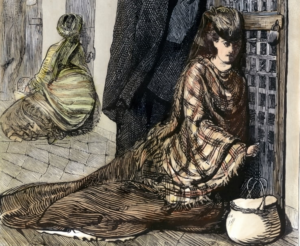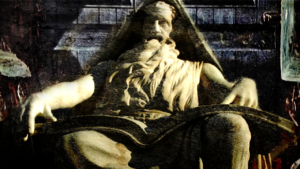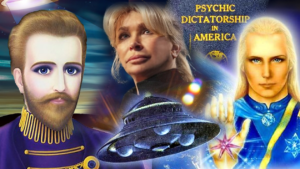Dodekatheon in Proclus’ order of causation
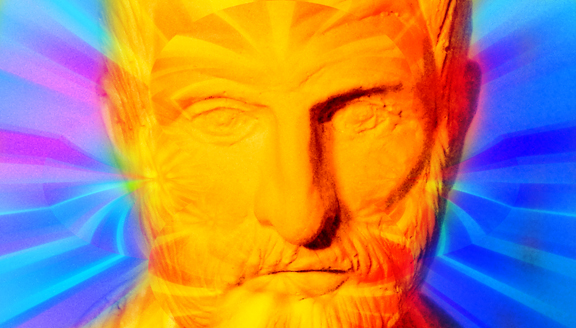
Part One, by Alexander Iulianus.
The below graphic is a digitised version of a graphic designed by Thomas Taylor in his translation of Elements of Theology by Proclus. The assignment of gods and goddesses to each of Proclus’ spheres is my own addition.
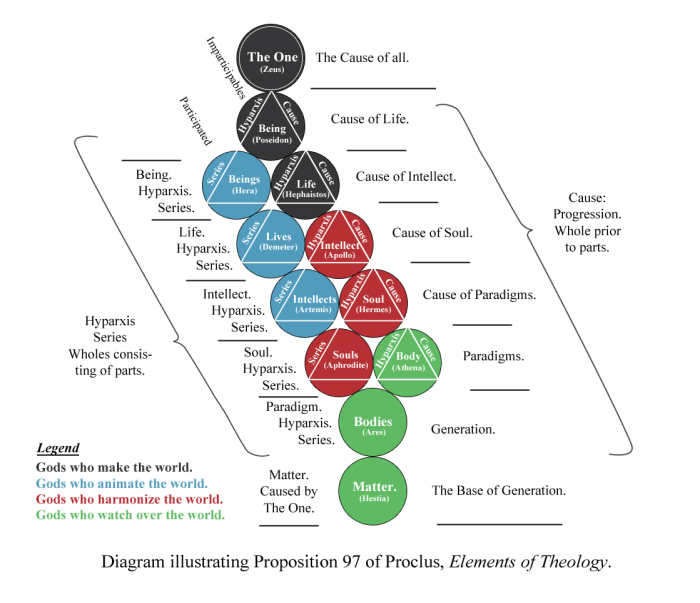
- A hyparxis is a Neoplatonic term for a hierarch or leader of a particular hierarchy, in this case a series.
- We will use the term hyparxis-god to mean a god (or goddess in the case of Athena) who fulfils the role of a hyparxis.
- A series is a group of things which share a likeness to, and source with, a common hyparxis.
- We will use the term series-goddess to mean the goddess through whom a hyparxis-god generates their series.
- The Act of a thing refers to the fundamental activity of that thing’s essence. As gods are eternally self-perfect and self-sufficient, the gods achieve their Essential-Act eternally and perpetually. Contrast against encosmic things which are bound by space-time, restricting their ability to achieve the wholeness of their Essential-Act.
Explanation of Proclus’ causes
Each of Proclus’ hyparxes have been assigned a god, with the exception of the final hyparxis over body, who is assigned the goddess Athena. The hyparxes-gods are masculine, imparting themselves upon the feminine serial-goddesses who enable participation. The serial-goddesses are receptive of the form hyparxes-gods impart through their Act, the receptive serial-goddess then replicating the form into a multitude of parts to form the series. The series remains with her, just as a mother’s children remains her flesh, but they are participle and are not like the hyparxis-god who contains no participles, remaining a unity.
The series participates in the nature of the hyparxis-god from whom they’ve take their form and in the essence of the serial-goddess from whom they are generated. It is by this the dodekatheon becomes the causes as per Proclus’ hierarchy of causes, detailed in the above image.
To explain in more lay terms, each god and goddess in the dodekatheon has a particular role in the production (causation) of things (beings). What role they have is dependent upon the god’s nature and whether they are a god or goddess. A god is masculine, and so by being masculine they are the ‘active principle’; a goddess is feminine, and so the ‘passive principle’. The active masculine and passive feminine complement each other in the process of generation.
The divine active masculine could be said to hold the energising force that is necessary to cause activity, but a god by himself is merely the will to act without anything to act upon. Hence the divine passive feminine complements him: a goddess does not possess the innate energy of the active masculine and so is passive and without activity, but she holds within herself the potential for realising (or actualising) activity, the active masculine lacking this within himself.
Therefore, it is by a goddess’ reception of a god’s energy that activity is kindled within her, leading to generation (causation). Hence in the above diagram every series is a goddess; it can only be by a goddess that the uniform and singular energy of a god could be turned into a multitude of things, just as a man is in need of a woman if he’s to produce a multitude of children, being incapable of doing it by himself. And likewise, the hyparxes are comprised of gods as it is the energy of gods that give energy and form to a goddess’ potential for activity.
As previously mentioned, the one exception to the masculine hyparxes is the goddess Athena, hyparxis of body and the cause of bodies. As seen in the diagram, Athena is the end of generation, and so unlike the prior hyparxes-gods, there is no further series for her to generate, and so fulfils a different function. More on her is written later in this piece.
The Dodekatheon in Proclus
In the following writing will be explained how the dodekatheon is within Proclus’ theology of causation. Each sphere upon the diagram has been labelled with the god or goddess from the dodekatheon that is responsible for the divine function described by Proclus in Elements of Theology. Below we will explore why the gods and goddesses have been arranged in this manner, starting from first sphere – The One, or Zeus – and ending with the final sphere – Matter, or Hestia. But first, let us consider the numerical importance of the dodekatheon.
The dodekatheon, as indicated by its name, is comprised of six gods and six goddesses. The six gods are Zeus, Poseidon, Hephaistos, Apollo, Hermes, and Ares; the six goddesses are Demeter, Hera, Artemis, Aphrodite, Hestia, and Athena. In regards to the multitude of other gods and goddesses not included within the dodekatheon, Sallust in On the Gods and the World says “the other gods are contained in these … Dionysius in Zeus, for instance, Asklepios in Apollo, the Charites in Aphrodite.”
Sallust describes four necessary divine actions: creation, animation, harmonisation, and maintenance of the harmony. These have been colour coded in the diagram. As it is appropriate for all actions to have their beginning, mean, and end, Sallust finds the necessity for twelve deities to fulfil the four acts, each having three parts.
Sallust’s explanation is quick and easy, but it may leave room for some doubt, and so we should find another explanation to confirm his assertions. The first instance of Zeus’ causation of being is the commencement of numerical progression, and so we shall count Zeus’ causation (though not Zeus himself, being beyond count) as the First. As all generation is achieved through numerical progression, the First – due to carrying with it Zeus’ generative nature having been directly begotten from Zeus – proceeds to the Second. A duality has now formed as there is the Second which is not the First. As Being’s nature is unity by virtue of Being taking its nature from Zeus, i.e. The One, and so does not exist in a state of pure duality, it is necessary to progress to the Third which harmonises the First and the Second into a common unity.
Hence then we have so far established:
1) Being, having generated directly from Zeus who is unity, must also be a unity;
2) that since generation is by numeral, each being must be the numerical subsequent to its prior (i.e. 2 must come after 1, 3 after 2, etc.); and
3) as Being does not subsist as duality and is unity, all beings are harmonised in triads.
As we have established that, in order for any number of gods and goddesses to exist, they must participate in a triad to harmonise their natures into unity, we know that the sum of their number must come always in multiples of three. The gods coming in multiples of three then, co-participating in their priors as well as their proceeding within harmonic union, and their common unity always divisible by three, the dodekatheon fits into this measure as four multiples of three. But why four multiples of three and not some other multiple of three?
For our answer, we must look to that which has been caused by the gods, that being the cosmos, as the gods impart their likeness upon the things they generate just as Zeus imparts himself onto the totality of gods. All things in the cosmos are caused, but nothing within the cosmos can be the ultimate cause as cosmic things require another cause for their being and cannot be self-caused. Therefore, when we speak to the nature of cosmic beings, we are at least in some small part making reference to the hypercosmic powers who are the causes for all things.
It is observable that all cosmic beings have their essence by way of multiple causes: the first is the efficient cause which is the prior which causes the being to come to be, the second is the material cause
In accord with Aristotle, it is observable that each cosmic being is the product of four causes: the material cause, the matter the being is constituted of; the formal cause, the shape and nature of the being; the efficient cause, the act which brought it to being; and the final cause, the final purpose for the being’s existence.
When we consider the four causes, a nuance often missed is an account for the being’s participation in superior unities. Each unity has its own causes, so by a being’s participation in within the unity, it is made subject to the cause of that unity. The causes of superiors can disrupt the causes of beings they have influence over, and when such disruption occurs, the causes of the superiors are prioritised over the causes of the inferiors.
EX GRATIA: Consider the causes of the human being: the material cause is their material composition; the constitution is flesh, this cause inclusive of any and all further material divisions such as atoms and the sub-atomics. The formal cause is humanness, the human-form causing their being to reflect that of humanity and to act accordingly. The efficient cause is parentage, a human’s mother and father the reason for why a human has individual being. And the final cause is union with the gods, the ultimate end sought by all human beings.
Causes are disrupted when the environment (either material or immaterial) within which a being is situated prevents the proper fulfilment and perfection of their individual causes. Should a child be born with severe birth defects, the birth defects are not a product of humanity’s four causes which govern the human being, but rather they occur due to the superior causes which govern the unities within which the human necessarily participates.
By this we mean that since the human causes, in this example the material cause, requires the human’s participation in a unity superior to the human, in this case Matter, the fulfilment of the individual cause is subject to the superior’s causes. In our example, should a cause in Matter direct it to disadvantage a human’s fulfilment of their material cause, then the human’s material cause will be achieved imperfectly, and so suffers degradation. As all four causes are inter-reliant, the alteration of one will alter the others.
Each of the four causes of all cosmic beings are subject to superior unities that will influence the outcome of particular causes positively or negatively. This leads beings into either greater or lesser perfection.
Read Part Two
https://apotheism.com
@Apotheiite









